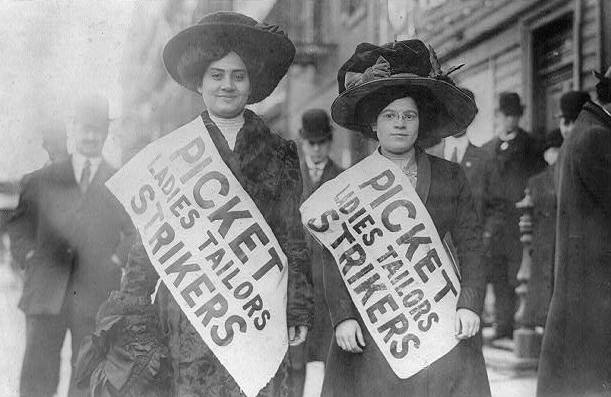International Women’s Day (IWD) has been observed since the early 1900’s – a time of great expansion and turbulence in the industrialised world that saw booming population growth and the rise of radical ideologies.
1908 Great unrest and critical debate was occurring amongst women. Women’s oppression and inequality was spurring women to become more vocal and active in campaigning for change. 15,000 women marched through New York City demanding shorter hours, better pay and voting rights.

1910 A second International Conference of Working Women was held in Copenhagen. A woman named Clara Zetkin (Leader of the ‘Women’s Office’ for the Social Democratic Party in Germany) tabled the idea of an International Women’s Day every year on the same day in every country.
1911 International Women’s Day was honoured the first time in Austria, Denmark, Germany and Switzerland on 19 March. More than one million women and men attended IWD rallies campaigning for women’s rights to work, vote, be trained, to hold public office and end discrimination.
1913-1914 International Women’s Day was transferred to 8 March and this day has remained the global date ever since. In 1914 women across Europe held rallies to campaign against the war and to express women’s solidarity. In London there was a march in support of women’s suffrage on 8 March. Sylvia Pankhurst was arrested in front of Charing Cross station on her way to speak in Trafalgar Square.

1975 International Women’s Day was celebrated for the first time by the United Nations. Then in December 1977, the General Assembly adopted a resolution proclaiming a United Nations Day for Women’s Rights and International Peace to be observed on any day of the year by Member States, in accordance with their historical and national traditions.
1996 The UN adopted an annual theme in 1996 – which was “Celebrating the past, Planning for the Future”. This theme was followed in 1997 with “Women at the Peace table”, and in 1999 with “World Free of Violence Against Women”..
2000 By the new millennium, International Women’s Day activity around the world had stalled in many countries. The world had moved on and feminism wasn’t a popular topic. International Women’s Day needed re-ignition. There was urgent work to do – battles had not been won and gender parity had still not been achieved.

2001 The global internationalwomensday.com digital hub was launched to re-energize the day as an important platform to celebrate the successful achievements of women and to continue calls for accelerating gender parity.
2011 Saw the 100 year centenary of International Women’s Day. Barack Obama proclaimed March 2011 to be “Women’s History Month”, calling Americans to mark IWD by reflecting on “the extraordinary accomplishments of women”. Hillary Clinton launched the “100 Women Initiative: Empowering Women and Girls through International Exchanges”. In the UK celebrity activist Annie Lennox lead a march across one of London’s iconic bridges raising awareness in support for global charity Women for Women International.
2020 and beyond The world has witnessed a significant change in both women’s and society’s thoughts about women’s equality. Many from a younger generation may feel all the battles have been won, while many feminists from the 1970’s know only too well the ingrained complexity of patriarchy. With more women in the boardroom, greater equality in legislative rights, and an increased critical mass of women’s visibility as impressive role models in every aspect of life, one could think that women have gained true equality. The unfortunate fact is that women are still not paid equally to that of their male counterparts, women still are not present in equal numbers in business or politics, and globally women’s education, health and the violence against them is worse than that of men. We do have female astronauts and prime ministers,, women can work and have a family, women have real choices.









